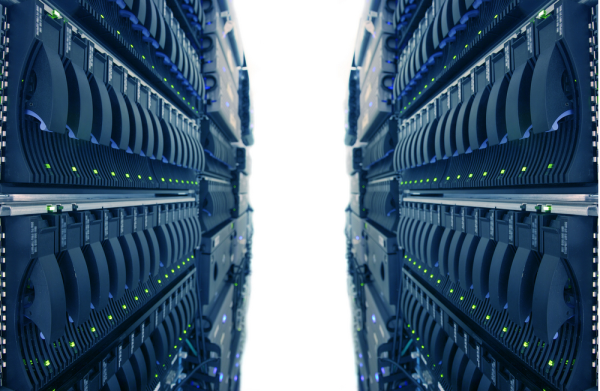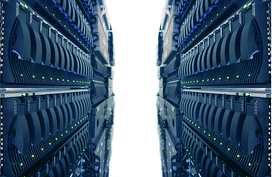The Economic Advantage of Automated Asset Management
At last year’s Data Center World Conference, organizers surveyed IT Managers regarding their current methods of IT Asset Management. Fully one-half of them responded that they were using archaic manual practices that had been standard practices for years. These included tracking assets with spreadsheets and using barcode labels and readers. Ten percent of those IT managers listed a clipboard as their most common tool for maintaining IT inventory lists!
These old-fashioned methods of Asset Management are unreliable and expensive and are overdue for change. According to Patricia Adams in the Gartner Report Tracking IT Assets with RFID and Bar Codes, “Companies are looking for ways to automate their annual and day-to-day maintenance of the deployed, in the field, inventory of IT assets and make it less manually intensive.”
Automated IT Asset Management. ITAM for short. Everyone’s doing it. Why? Cost and the Future.
“Show me the money”
There’s an old act I used to do when running a data center. Anytime a new proposal was being brought forward, I channeled Cuba Gooding Jr. and demanded to “Show me the money.” In IT, it’s just not enough to do things better or cheaper; you’ve got to do it both better and cheaper.
Automated ITAM provides quick and easy returns. According to a Gartner survey of enterprise IT Asset Managers, asset tracking automation delivers benefits of more than 5% in the first year alone, with 42% saying they had benefits of 10% or higher.
Our experience shows clients implementing RF Code solutions for automated asset tracking and management have results better than this industry benchmark. Clients, including a large Midwest financial trading house, which has a medium size data center with 350 racks, saved 10% in the first year. And that included paying an external implementation partner to do the work. Clients who do the work themselves with existing resources save about 20%. In either case, the real savings roll in during subsequent years, about 70%, when you take into account such things as:
- Significantly reduced labor costs for the inventory process
- Near elimination of lost, misplaced, or even stolen machines
- Elimination of the energy cost of these “ghost’ assets
- Enhanced accuracy of software licensing per processor
- Precise analysis of rack density
And that doesn’t take into account that having an automated ITAM solution and an accurate baseline of your equipment positions you nicely for what you can do next in your Data Center.
The Future. You can get there from here.
The evolving IT world of virtualization and cloud, combined with the economic pressures of 2012, have combined to drive higher utilization of equipment. This, in turn, has driven the increased need to manage the mechanics, availability, and cost of an increasingly complex and demanding IT environment. The tools, solutions, and methodology to manage this environment are called Data Center Infrastructure Management (DCIM).
The first step in a successful DCIM is to fully understand your data center by knowing every detail about what it is you’re managing. That’s why an automated ITAM is so important. It gives you information about what resources are available, and where they are, and lets you know in real-time when there are changes. This baseline of data is fundamental to DCIM.
The second step in a successful DCIM involves not only the physical accounting of your IT assets but also knowing about the conditions that affect them, such as temperature and moisture. This involves supplementing your ITAM system with environmental monitoring. An effective environmental monitoring system will protect your equipment from overheating and failing. It will also allow you to avoid wasting energy and money by overcooling your data. According to Gartner, a typical data center will save 6% on its energy bill in the first year of environmental monitoring. And that means that you are likely to recover your project investment in the first year.
With both ITAM and Environmental Monitoring in place, you are well on your way to adding value to your DCIM, providing you with a very rich set of benefits:
- Flawless asset tracking and management
- Reduction of cooling and power costs
- Reduction of equipment failure
- More efficient use of IT resources
- Improved data center cost management
- And it’s good for the environment and the power grid as well.
RF Code – Real-Time Asset Management and Wire-free Environmental Monitoring
RF Code has offered state-of-the-art solutions for asset management and environmental monitoring for the past 15 years. We currently protect well over a million assets in more than 250 customers worldwide. We use wire-free, active RFID technology and open software to provide real-time monitoring, tracking, and managing of IT assets and asset environments. This not only provides real-time sensor and asset tag data, but it does this without having to use costly to purchase, deploy and maintain wiring and cables. Moreover, our wireless capability uses a patented radio frequency (433 MHz) that allows the signal to go through and around metal racks or concrete floors. That’s important because data centers are thick with metal; other frequencies, therefore, don’t perform as well.
There are several key advantages to our wireless solution. First, it’s relatively easy and inexpensive to install, primarily because it’s expensive and time-consuming to deploy a wired solution. Our solution allows you to “peel and stick” asset management or environmental monitoring tags wherever you need them, and they begin operating immediately. Second, it’s very portable and scalable. If you’re battling a hot spot in your data center, it’s a snap to add several additional temperature monitors to increase the granularity of data to help you correct the problem. It’s equally simple to add additional asset tags or to change things like event notifications. Third, it’s a real-time monitoring system, so it helps to prevent loss and downtime: You can be alerted the moment that a piece of equipment is tampered with or when the environment changes.
The RF Code solution includes software for asset tracking and environmental monitoring. We’ll leave the nuances of this to a separate blog entry, but we offer the ability to manage your resources through a fully configurable rules engine, which allows you to define what happens upon any number of notification events. Or, if you use a market-leading third-party software for DCIM, BMS, and ERP among others, we likely already integrate with them.
RF Code’s solutions are flexible to allow you to do what you need to do. Ours is a dual-use infrastructure. If you want to start with environmental monitoring and a green IT initiative, you can do that first and then over time extend your capability easily into asset tracking and managing. Or you can do the inverse and start with ITAM and then extend to environmental monitoring. Or you can supplement an existing ITAM or environmental monitoring system that you currently employ with our cost-effective solution. The implementation of RF Code solutions is simple to configure and manage. However, through a network of partners providing consulting and implementation services, we can also help you with your implementation, should you desire that level of assistance.




